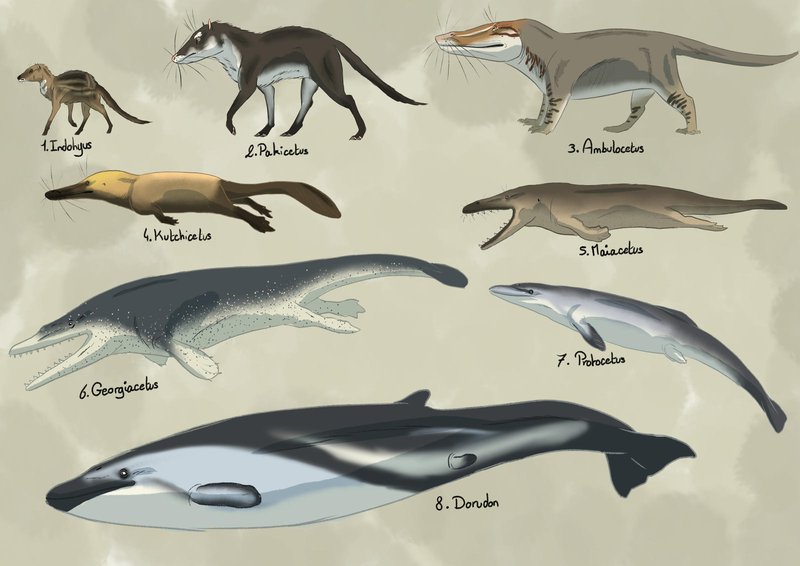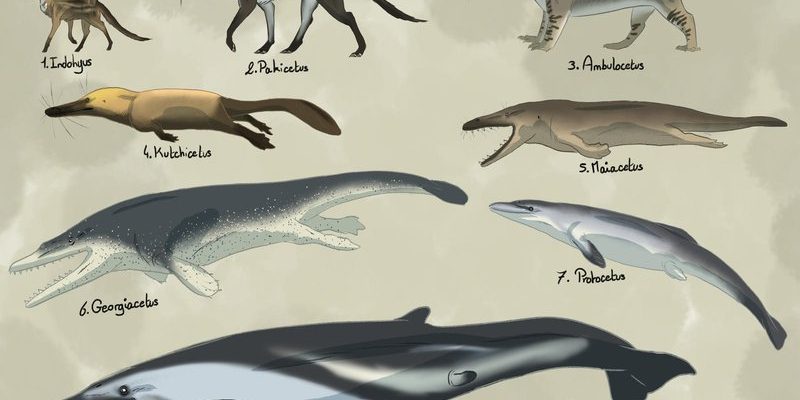
Imagine going on an adventure through time—starting from a whale’s early ancestors who roamed the land to today’s enormous sperm whales diving deep into the ocean. This journey is filled with changes that showcase resilience, adaptation, and survival against the odds. So, grab a cup of coffee, and let’s explore the twists and turns of the sperm whale’s evolutionary saga.
1. The Ancestry of Whales: From Land to Sea
You might be surprised to learn that whales once had four legs and lived on land. That’s right! Their ancestors were small, hoofed mammals called artiodactyls, which lived around 50 million years ago. Imagine a creature that looked a bit like a miniature deer but was slowly being drawn toward a life in the water. As they adapted to their environment, these animals underwent significant changes, just like any good superhero story.
The transition from land to sea was gradual. Over millions of years, their bodies transformed—legs became flippers, and tails evolved for swimming. This shift was not just physical; it also involved changes in their feeding habits, reproduction, and social structures. Sperm whales today are descendants of these remarkable transformations, showcasing the power of nature to reinvent itself.
2. The Unique Characteristics of Sperm Whales
Sperm whales are quite different from other whale species. They can grow up to 60 feet long and weigh as much as 45 tons! Their most striking feature, though, is the large, block-shaped head that makes up about one-third of their body. This massive head contains a substance called spermaceti, which is thought to help with buoyancy and echolocation. Think of it as their built-in sonar system!
Another interesting fact is that sperm whales are deep divers. They can plunge to depths of over 10,000 feet! This ability allows them to hunt giant squid and other deep-sea creatures, a diet that’s quite unique among whales. They can hold their breath for over an hour, diving into the darkness of the ocean to find food. This remarkable adaptation is a key part of their evolutionary journey, allowing them to thrive in environments that many other species can’t reach.
3. The Social Behavior of Sperm Whales
Sperm whales are not just solitary giants; they are highly social creatures. They often travel in groups called pods, typically made up of females and their young. The social structure of these pods is matriarchal, which means that the oldest female leads the group. This is an interesting twist in the evolutionary story, as many animals tend to follow male leaders instead.
Within these pods, whales communicate using a series of clicks and whistles. It’s like they have their own language! These social interactions are crucial for hunting and nurturing the young. The close-knit family dynamics play a vital role in their survival, showcasing that their evolutionary journey is not just about physical adaptations but also about social strategies.
4. The Threats Facing Sperm Whales
Despite their impressive adaptations and social structures, sperm whales face several threats in today’s world. From hunting to climate change and ocean pollution, these challenges significantly impact their populations. Historically, sperm whales were heavily hunted for their oil, resulting in a dramatic decline in their numbers.
Today, they are protected under various international laws, but issues like entanglement in fishing gear and habitat loss continue to threaten their survival. The journey of the sperm whale is a poignant reminder of the delicate balance of marine ecosystems and the need for conservation.
5. The Role of Sperm Whales in the Ecosystem
Sperm whales play a crucial role in the ocean ecosystem. They are often referred to as “ecosystem engineers,” helping to balance marine life. By feeding on squid and other deep-sea creatures, they help control populations and ensure a healthy food web. Their diving behavior also contributes to nutrient cycling in the ocean.
When they dive, they release nutrients that can support the growth of phytoplankton, which forms the basis of the ocean’s food chain. This highlights an essential aspect of their evolutionary journey—their adaptations not only served their survival but also positively impacted the environment around them.
6. The Future of Sperm Whales
So, what’s next for sperm whales? Their future largely depends on our actions today. Conservation efforts are crucial in protecting their habitats and ensuring their survival. Organizations around the globe are working tirelessly to study these magnificent creatures and raise awareness about their plight.
As humans, we have a responsibility to share the ocean with these incredible beings. We can advocate for sustainable fishing practices, reduce pollution, and support marine protected areas. Each step we take can help ensure that future generations can marvel at the evolution of the sperm whale just as we do today.
7. Conclusion: Reflecting on an Evolutionary Marvel
The evolutionary journey of the sperm whale is a testament to the wonders of nature. From their land-dwelling ancestors to their majestic presence in the ocean today, their story is filled with adaptation, social complexity, and resilience. As we learn more about these incredible animals, we can better understand our role in their continued survival.
Just like sipping your favorite coffee while sharing stories, there’s something profoundly enriching about exploring the mysteries of the sperm whale. Let’s commit to protecting these extraordinary creatures and the oceans they call home. Together, we can support their journey, ensuring that their story continues to unfold for generations to come.

